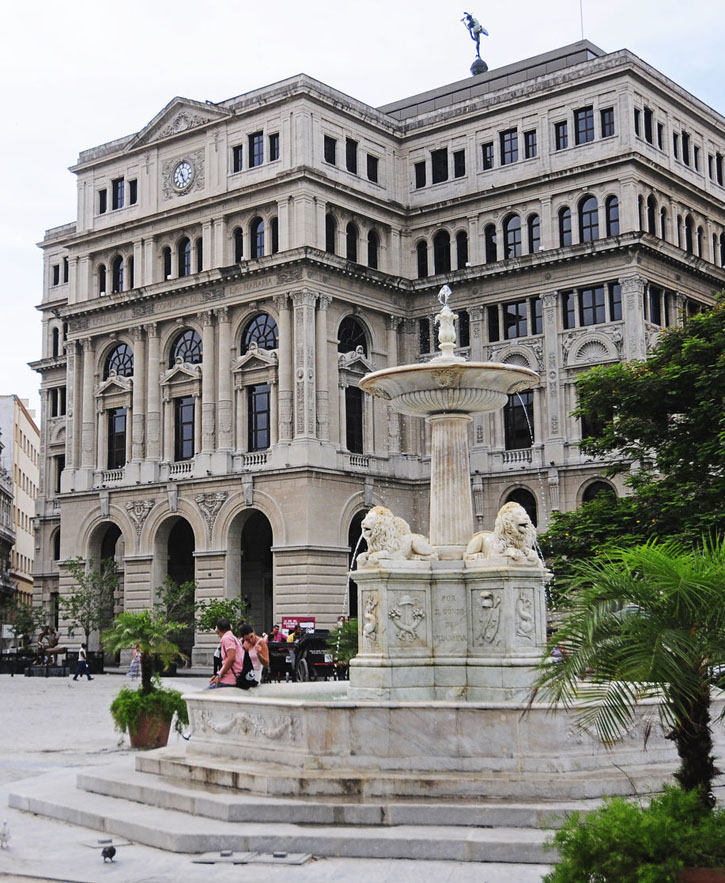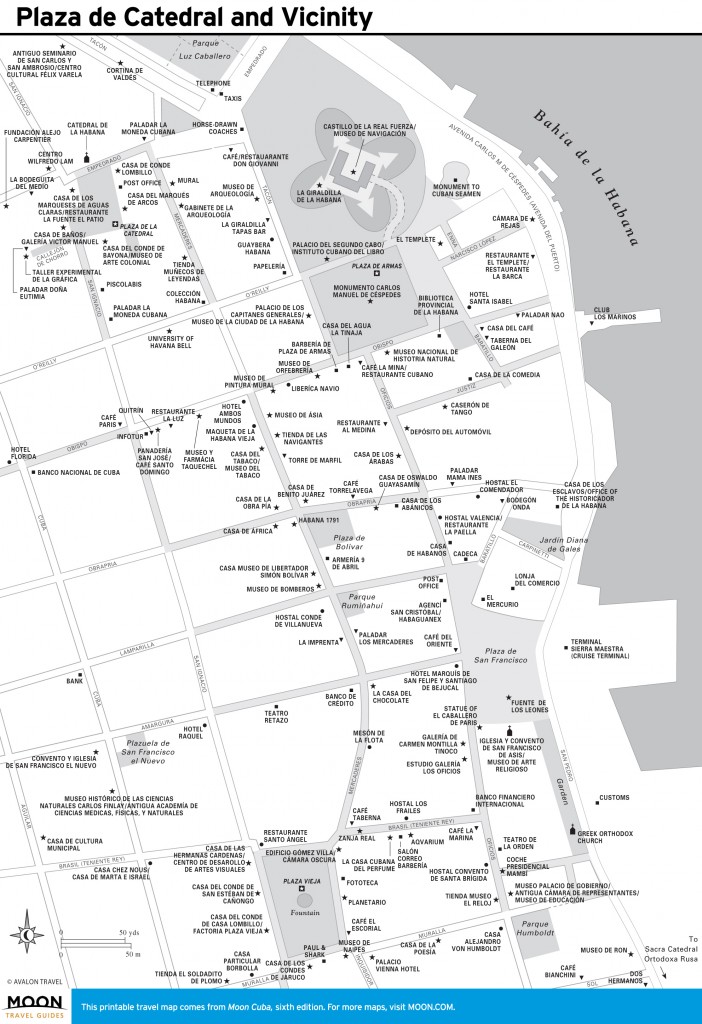Cobbled Plaza de San Francisco, two blocks south of Plaza de Armas, at Oficios and the foot of Amargura, faces onto Avenida del Puerto. During the 16th century the area was the waterfront of the early colonial city. Iberian emigrants disembarked, slaves were unloaded, and galleons were replenished and treasure fleets loaded for the passage to Spain. A market developed on the plaza, which became the focus of the annual Fiesta de San Francisco each October 3, when a gambling fair was established. At its heart is the Fuente de los Leones (Fountain of the Lions) by Giuseppe Gaggini, erected in 1836.

View of the picturesque Plaza de San Francisco in Old Havana, Cuba. The building is the Lonja, formerly the stock exchange, now home to many media organizations. Photo © oxana krutenyuk/123rf.
During the 16th century the area was the waterfront of the early colonial city.The five-story neoclassical building on the north side is the Lonja del Comercio (Goods Exchange, Amargura #2, esq. Oficios, tel. 07/866-9588, Mon.-Sat. 9am-6pm), dating from 1907, when it was built as a center for commodities trading. Restored, it houses offices of international corporations, news bureaus, and tour companies. The dome is crowned by a bronze figure of the god Mercury.Behind the Lonja del Comercio, entered by a wrought-iron archway topped by a most-uncommunist fairytale crown, is the Jardín Diana de Gales (Baratillo, esq. Carpinetti, daily 9am-6pm), a park unveiled in 2000 in memory of Diana, Princess of Wales. The three-meter-tall column is by acclaimed Cuban artist Alfredo Sosabravo. There’s also an engraved Welsh slate and stone plaque from Althorp, Diana’s childhood home, donated by the British Embassy.
The garden backs onto the Casa de los Esclavos (Obrapía, esq. Av. del Puerto), a slave-merchant’s home that now serves as the principal office of the city historian.

Plaza de Catedral and Vicinity
Excerpted from the First Edition of Moon Havana.